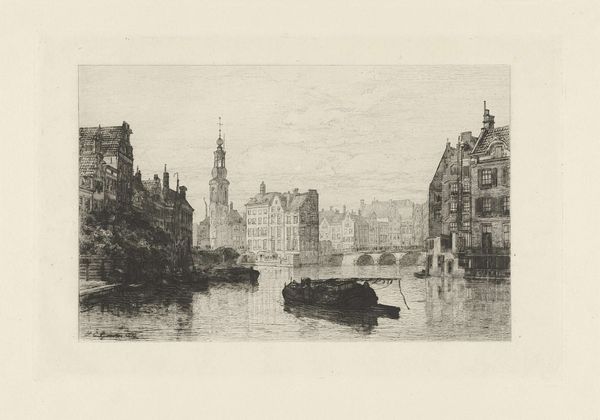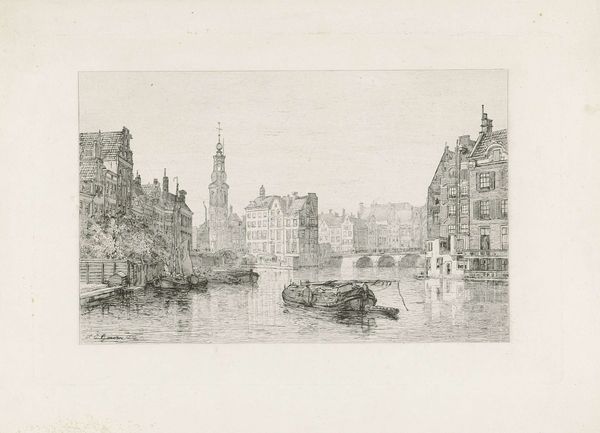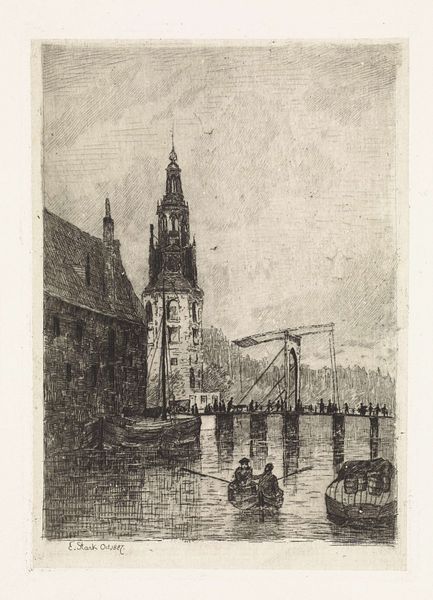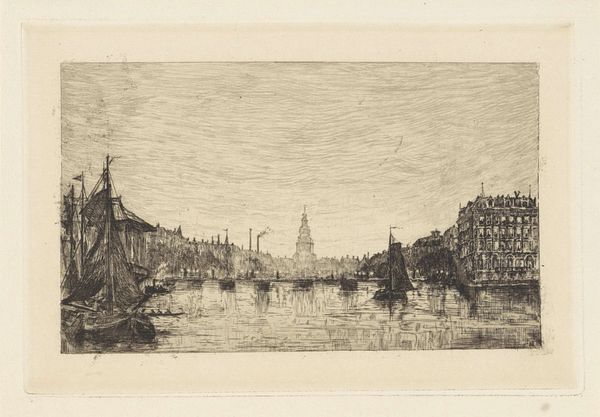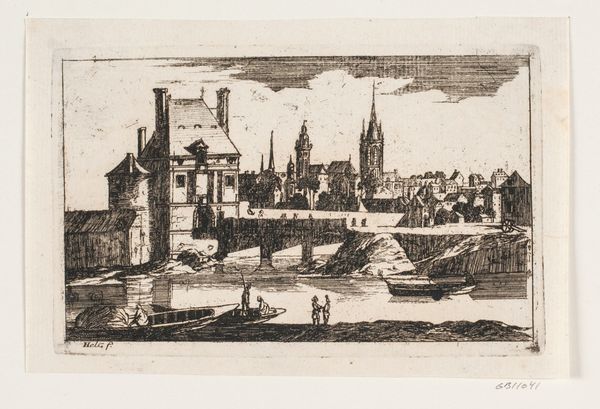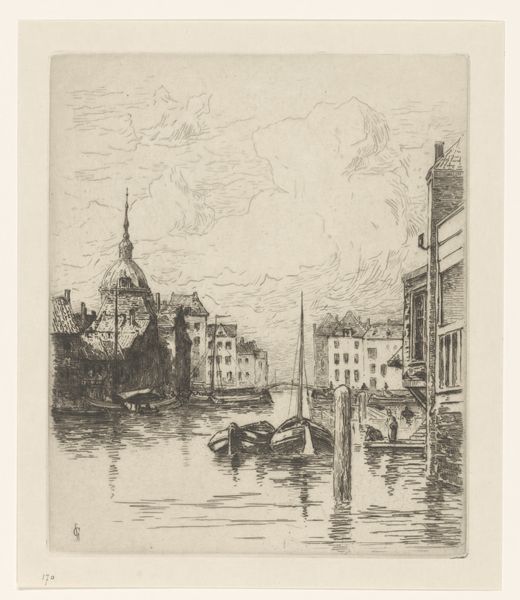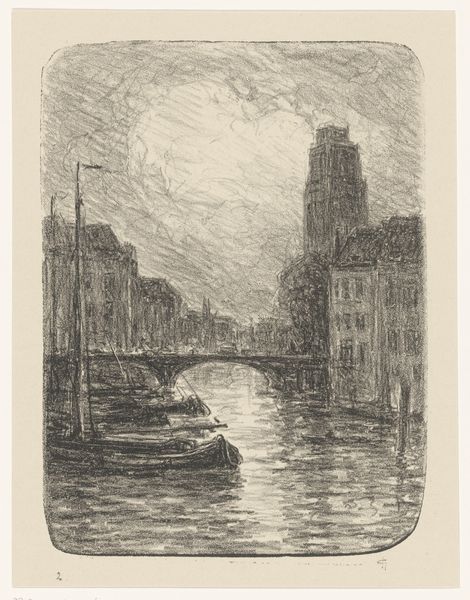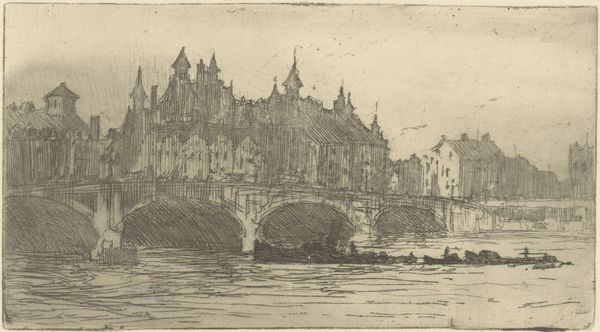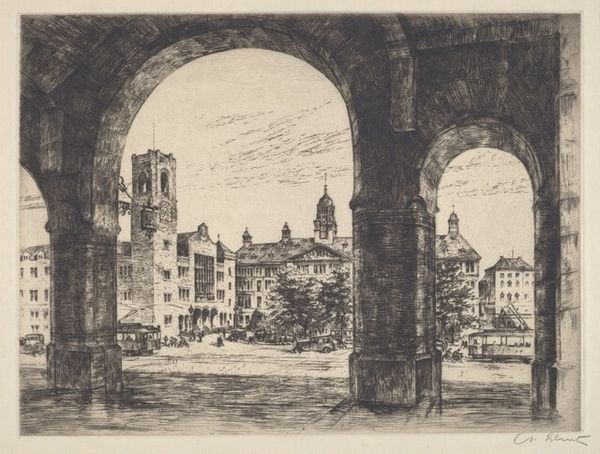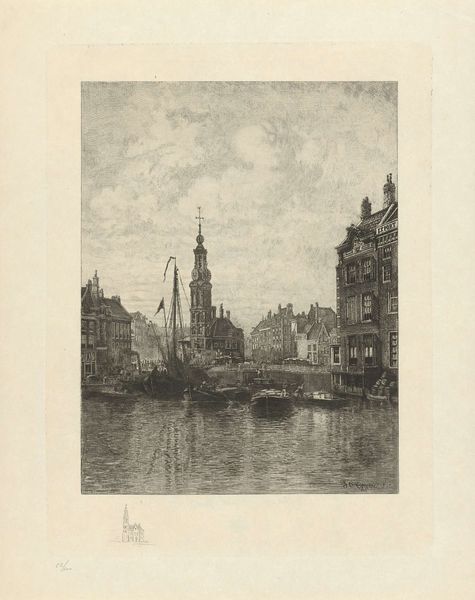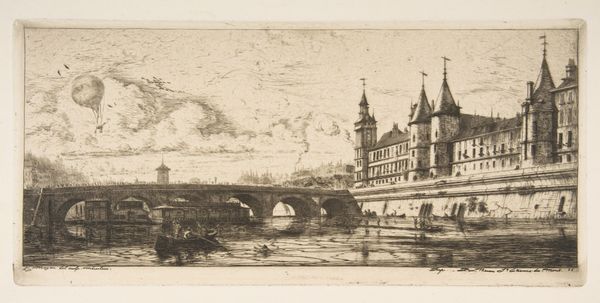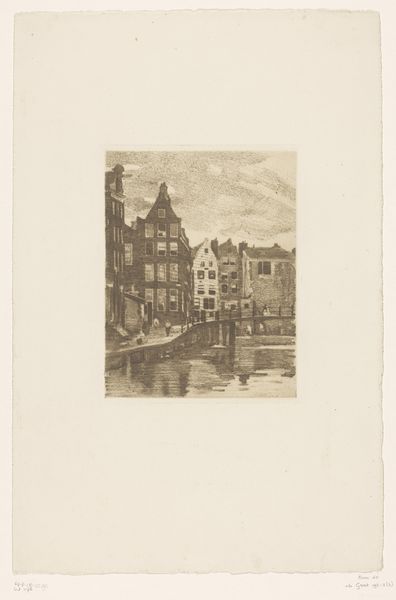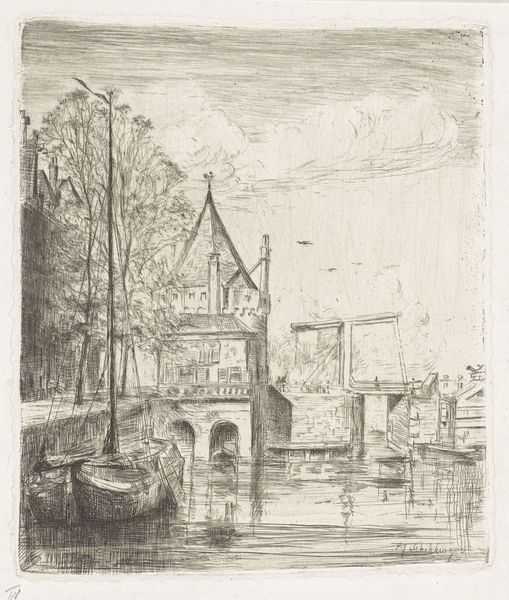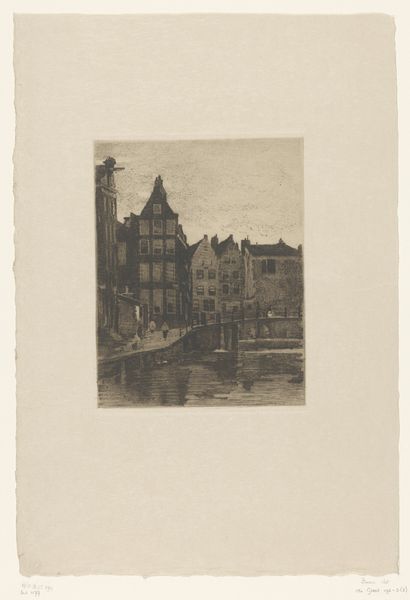
print, etching
#
dutch-golden-age
# print
#
etching
#
old engraving style
#
landscape
#
cityscape
#
realism
Dimensions: height 238 mm, width 315 mm
Copyright: Rijks Museum: Open Domain
Editor: So, this is "Gezicht op de Markengracht te Amsterdam," an etching by Frans Schikkinger, created sometime between 1848 and 1902. It’s quite delicate, almost like a whisper of a memory. What strikes me is how the bridge becomes this focal point, a crossing between two distinct worlds within the city itself. How do you interpret this work? Curator: It’s interesting you pick up on the "crossing." Considering the timeframe, this image is not just a depiction of Amsterdam; it's a document reflecting a period of immense social and political change. Amsterdam, like many European cities at the time, was undergoing rapid industrialization and urbanization. How do you think that might influence the reading of the bridge? Editor: Well, if it symbolizes connection, it could represent the tension between old and new. Like the older buildings contrasted with the promise of the future crossing the canal. Curator: Precisely! This bridge might also represent economic disparity. The canal-side was often associated with trade and commerce, sometimes exploiting global trade routes. Who benefitted and who was marginalized in this booming economy? Editor: That’s a sobering thought. I hadn’t considered the possible connection between the city and the economics that came from exploiting other people. Curator: The "Dutch Golden Age" style brings with it problematic legacies of colonialism and economic exploitation. As we enjoy its artistry, we need to remain cognizant of its complicated past. What do you think we, as viewers, should do with these complexities? Editor: I suppose acknowledging that complexity is the first step. Seeing it not just as a pretty picture, but as a window into a society with deep-seated inequalities. Curator: Absolutely. By critically engaging with this image, we confront historical and ongoing struggles for social justice, making us more aware of how history echoes in our present. Editor: It’s amazing how much a simple etching can reveal when you start digging into the historical context. I'll definitely view art differently now.
Comments
No comments
Be the first to comment and join the conversation on the ultimate creative platform.
